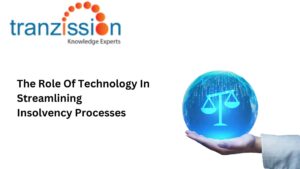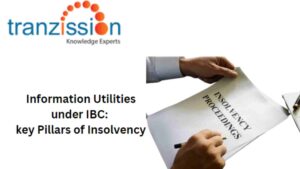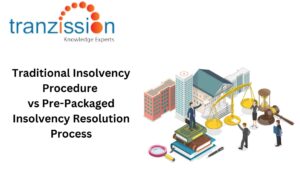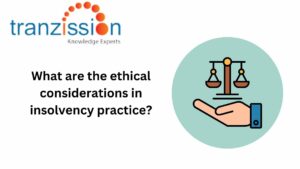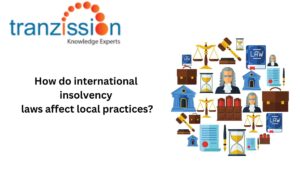
Traditional Insolvency Procedure vs Pre-Packaged Insolvency Resolution Process
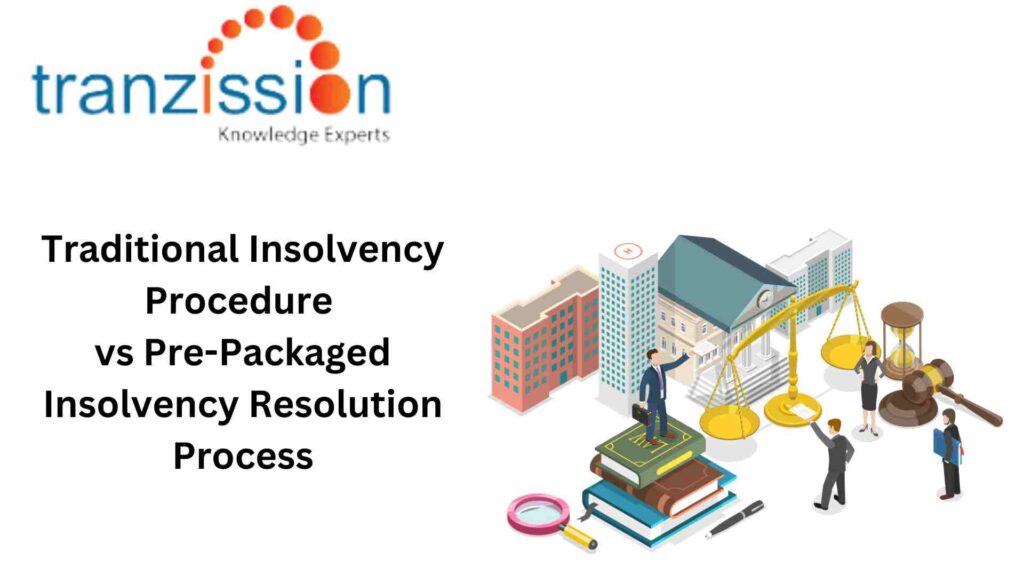
Table of Contents
Under insolvency law, the Insolvency Bankruptcy Code, 2016, offers two processes for resolving the insolvency of a company or individual: the traditional insolvency procedure and the pre-packaged insolvency resolution process. These processes, while both aimed at resolving financial distress, differ in approach. The traditional insolvency process is a formal court-driven method, typically used for complex insolvencies. On the other hand, the pre-packaged insolvency resolution process, designed for micro, small, and medium enterprises, blends both formal and informal approaches, providing a more efficient and less disruptive resolution. Traditional vs Pre-Pack Insolvency: both processes offer unique advantages depending on the specific needs of a financially distressed company.
What is Traditional Insolvency?
The traditional insolvency process is a formal procedure for handling a financially distressed company. The main aim of the traditional insolvency process is to revive, restructure, or rehabilitate the corporate debtor (CD). This process is initiated by an application by the CD or its creditors before the Adjudicating Authority. Once the application has been admitted, the corporate insolvency resolution process commences, which is followed by the appointment of an interim resolution professional, the declaration of a moratorium period, and the formation of the Committee of Creditors. After the formation of a resolution plan, the Committee of Creditors and the National Company Law Tribunal must approve it for the revival of the company on a clean slate. If the resolution plan is not approved, the company proceeds with liquidation.
What is a Pre-Packaged Insolvency Resolution?
The pre-packaged insolvency resolution process (PPIRP) was introduced when the micro, small, and medium enterprises faced insolvency. It is a hybrid procedure consisting of formal and informal procedures and is considered a more efficient and less costly alternative to the traditional insolvency process. The CD and its creditors draft a base resolution plan before the commencement of the insolvency process. This pre-packed plan is then submitted to the Adjudicating Authority for approval, making it more time-efficient than lengthy court procedures. The main objective of PPIRP is preserving the CD’s assets, avoiding termination of employment, and ensuring the continuity of its business operations.
Traditional vs Pre-Pack Insolvency
| Traditional Insolvency Procedure | Pre-Packaged Insolvency Resolution Process | |
| Pre-Negotiation of Terms | Occur after the initiation of insolvency proceedings | Before the commencement of insolvency proceedings. |
| Speed and Efficiency | Time- bound, involves court hearings, creditor meetings, and formulation of a restructuring plan. This may lead to delays in implementing necessary changes. | The resolution plan is ready before the commencement, the plan can then be implemented once the insolvency proceedings start. The time spent in court is reduced, hence, disruptions are minimised. |
| Minimisation of Disruptions | As there is uncertainty of the result of the insolvency proceedings, it may disrupt the business operations, affecting employees, suppliers, and customers. | With the pre-packed plan agreed upon minimises the disruptions. Therefore, the business continues efficiently, and the stakeholders also face fewer disruptions. |
| Preservation of Value | The value of the corporate debtor’s assets is reduced because of the court proceedings and uncertainty. | The value of the company assets is better safeguarded due to a pre-packed resolution plan |
| Stakeholder collaboration | Negotiations occur under the supervision of the court. Hence, stakeholder collaboration often strengthens after the initiation of the insolvency proceedings. | This process promotes an early collaboration among the stakeholders because of the cooperative and proactive approach towards resolution. |
Traditional Insolvency Process
The traditional insolvency process is governed by the Insolvency and Bankruptcy Code, 2016 (IBC) and the relevant regulations. It is necessary that the insolvency practitioners, corporate debtors, creditors, stakeholders, and other involved parties adhere to the strict timelines specified under the IBC and the relevant regulations. The steps for traditional insolvency are:
1) Initiation of the insolvency proceedings: The financial creditor, operational creditor, or the corporate debtor under sections 7,8 or 9 of the IBC, respectively, may file an application with the National Company Law Tribunal (NCLT).
2) Admission or rejection of the application: The application’s admission or rejection depends on the examination of the NCLT. If the application is admitted, the corporate insolvency resolution process (CIPR) is initiated. If the NCLT rejects the application, it must communicate to the applicant of the reasons for such a rejection.
3) Moratorium period: Under section 13, after receiving the application, the NCLT will declare the moratorium period and make a public announcement for the corporate insolvency resolution process (CIRP) after appointing the interim resolution professional. Once it has been declared, the legal proceedings are suspended, which prohibits the creditors from enforcing any security interest over the CDs assets.
4) Appointment of the interim resolution professional: Under section 13(1)(c), an interim resolution professional (IRP) is appointed to manage the corporate affairs of the CD during the insolvency process, taking control of the assets of the company, and conducts an assessment of its current financial position.
5) Formation of the Committee of Creditors: The IRP contravenes the CoC meetings, which consist of the financial creditors of the CD.[1] The CoC has an important role of approving the resolution plan and appointing the resolution professional,
6) Submission of resolution plans: A resolution plan is a comprehensive document including the manner in which the CD’s assets will be used to repay its creditors in order to revive the company. The resolution applicants must submit the resolution plan to the CoC as given under the section 30(1) of IBC.
7) Approval of resolution plan: Before moving forward with the process, it is a pivotal step for the resolution to have the approval of the CoC by not less than 66% votes of the members of the CoC.[2] After that, it is submitted to the Adjudicating Authority, the NCLT in the insolvency process.
8) Approval by the Adjudicating Authority: The Adjudicating Authority, the NCLT, will review the resolution plan, ensure that the stakeholders’ interests are met and comply with the legal and regulatory requirements. As mentioned in section 31 of IBC, the approval of the NCLT is binding on all stakeholders
9) Implementation of the resolution plan: Once the NCLT approves the resolution plan, the resolution applicant may implement this plan, and the resolution process will be concluded as successful.[3] After that, the moratorium period is lifted, and the CD control is handed over to the new management.
10) Liquidation process: If the resolution plan is not approved by the CoC or NCLT, or the approved plan is not implemented within the specified time frame, the NCLT may also pass an order for liquidating the company as under section 33 of IBC.
Pre-Packaged Insolvency Resolution Process in India
The pre-packaged insolvency resolution process (PPIRP) was introduced by the Insolvency and Bankruptcy Code (Amendment) Ordinance, 2021, which inserted Chapter III-A in the IBC, along with sections 54A-54P. As per these sections, the procedure of PPIRP is as follows:
1) Initiation of the insolvency process: As under section 54A(1) of IBC, an application for initiating the PPIRP may be made by a CD who has been classified as a micro, small, or medium enterprise (MSME) under section 7(1) of the Micro, Small and Medium Enterprises Development Act, 2006.
2) Admission or rejection of the application: The NCLT may admit or reject the application within 14 days of receiving the applicant.[4]
3) Formation of the base resolution plan: As per section 54K, the CD must submit the plan to the resolution professional within 2 days of the PPIRP commencement.
4) Moratorium period:
5) Formation of the Committee of Creditors: Under
6) Approval of the resolution plan by the CoC: Similar to section 12(2) of the CIRP, under PPIRP, the CoC has to approve the resolution plan before submitting it to the NCLT for its approval. The CoC may approve the resolution plan as per section 54K if it does not impair any claims owed by the CD to the operational creditors with at least 66% vote of the members of the CoC.
7) Approval of resolution plan by NCLT: The NCLT may pass an order within 30 days of such resolution plan if the NCLT finds the plan satisfactory. However, if the NCLT finds that the resolution plan does not include the requirements listed under the IBC, the NCLT may reject the resolution plan within 30 days of receiving of the resolution plan.
8) Termination of PPIRP: The resolution professional may apply to the NCLT to terminate the proceedings. The NCLT will pass an order for terminating the proceedings within 30 days of receiving this application.
9) Initiation of corporate insolvency resolution process: Under Section 54-O, the COC may initiate the CIRP at any time during the PPIRP but before the approval of the resolution by 66% to resolve the case into CIRP if the CD is eligible for CIRP. After which, the NCLT may terminate PPIRP and initiate CIRP if the reasons of the CoC are found satisfactory and the requirements are met.
Advantages of PPIRP:
There are many advantages of opting for the pre-packed insolvency resolution process, making it more financially and legally viable. By incorporating a hybrid process, in which formal and informal processes are adopted, amongst its many advantages include:
1) Efficiency:
As per section 54D(1) of the IBC, the maximum period for completing the insolvency process is 120 days, which is much less than that of the corporate insolvency resolution process (CIRP), which states that the maximum period is 330 days.[5] Hence, this insolvency process provides for a more efficient resolution.
2) Cost-Effectiveness:
In contrast to CIRP, where the minimum default is Rs. 1 crore, the minimum default for an enterprise to apply under the PPIRP is Rs. 10 lakhs. In addition, the application fee is only Rs. 15,000, making the PPIRP more cost-effective, especially for MSMEs which may have limited resources.
3) Business Continuity:
By forming a base resolution plan before the insolvency process commences, PPIRP provides a process that minimises the company’s disruptions. This ensures that the ongoing business operations of the CD are preserved and the employment of those in the company is not terminated.
4) Collaborative Approach:
The pre-negotiation of the matters before the initiation of PPIRP makes this a collaborative approach involving the stakeholders in drafting the base resolution plan while ensuring that the debtors, its creditors, and other stakeholder’s interests are being reflected accurately.
Conclusion
The traditional insolvency and pre-packaged insolvency resolution processes are both pivotal in reviving companies facing varying levels of financial distress. The traditional insolvency process is more structured and detailed, making it ideal for complex cases. On the other hand, the PPRP is cost-effective, efficient, and fosters a collaborative approach, particularly suited for MSMEs. The decision between Traditional vs Pre-Pack Insolvency depends on the corporate debtor’s financial position, with each process offering distinct advantages tailored to the unique needs of companies in distress.

